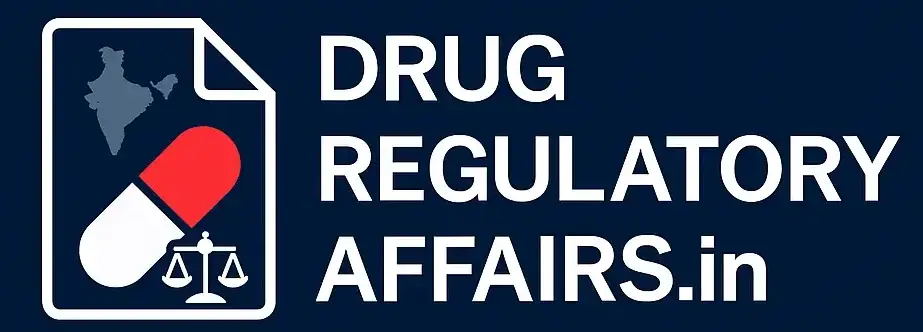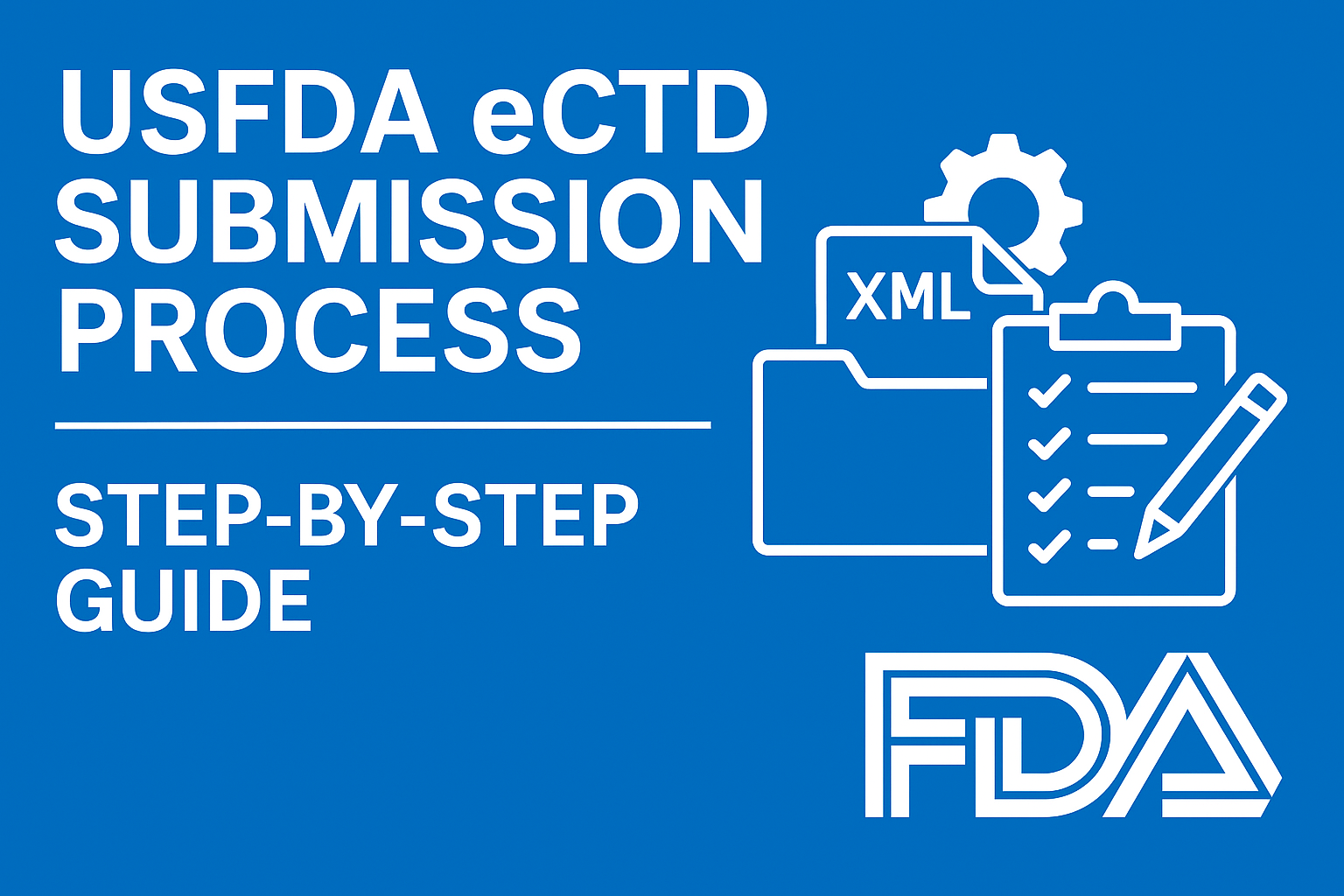USFDA eCTD Submission Process – A Step-by-Step Guide
USFDA eCTD Submission Process: In today’s digital era, regulatory authorities worldwide are embracing electronic formats for drug submissions.
For the U.S. Food and Drug Administration (USFDA), the electronic Common Technical Document (eCTD) has become the mandatory standard for submitting applications such as INDs, NDAs, ANDAs, and more.
Also Read: How to Prepare a USFDA Pre-IND Meeting Package
Whether you are a pharmaceutical company, regulatory professional, or contract research organization, understanding the USFDA eCTD submission process is crucial for regulatory compliance and approval success.
This article about USFDA eCTD Submission Process provides a comprehensive, step-by-step guide to the eCTD submission process for the USFDA, including key modules, tools, timelines, validation, and compliance tips.
🧠 What is eCTD?
The electronic Common Technical Document (eCTD) is an interface and international specification for the pharmaceutical industry to transfer regulatory information electronically to regulatory agencies.
eCTD is the standard format for:
- IND (Investigational New Drug Applications)
- NDA (New Drug Applications)
- ANDA (Abbreviated New Drug Applications)
- BLAs (Biologics License Applications)
- Annual Reports, Supplements, and Amendments
💡 eCTD is mandatory for all submissions to CDER and CBER of the USFDA.
🔍 USFDA eCTD Submission Process Requirements
| Requirement | Mandatory Since |
|---|---|
| NDA, ANDA, BLA | May 5, 2017 |
| Commercial INDs | May 5, 2018 |
| Master Files (DMFs) | May 5, 2020 |
| All subsequent submissions | Yes |
Failure to comply with eCTD can result in the FDA refusing to file (RTF) your application.
🧾 Key Components of eCTD
eCTD is structured into five modules:
- Module 1: Regional Administrative Information (specific to USFDA)
- Module 2: Summaries and Overviews
- Module 3: Quality (CMC Information)
- Module 4: Nonclinical Study Reports
- Module 5: Clinical Study Reports
Each module is organized into sections and sub-sections with XML backbones and folder structures.
🗂 Step-by-Step USFDA eCTD Submission Process
✅ Step 1: ESG Account Registration
The Electronic Submissions Gateway (ESG) is the primary channel to send submissions to USFDA.
To register:
- Visit FDA ESG Portal
- Create an ESG WebTrader Account
- Submit test submissions to validate technical setup
- Get production account approval
✅ Step 2: Choose eCTD Publishing Software
Use validated software to structure, publish, and validate eCTD sequences. Popular tools include:
- Lorenz docuBridge
- Extedo eCTDmanager
- MasterControl
- GlobalSubmit
These tools help you build:
- XML backbone
- TOCs (Tables of Contents)
- Granular document mapping
✅ Step 3: Prepare Submission in eCTD Format
Ensure that your documents:
- Follow correct naming conventions
- Are in PDF format with bookmarks and hyperlinks
- Use standard fonts and styles
- Meet FDA’s Technical Conformance Guide
Each eCTD sequence must include:
- An XML backbone file
- Document folder hierarchy
- DTD and stylesheet references
✅ Step 4: Validation of eCTD Submission
Before submission, your eCTD must be validated using:
- Lorenz Validator
- Extedo Validator
- USFDA’s eCTD Validator (via ESG)
Validation checks:
- Missing documents or metadata
- XML errors
- Hyperlink/bookmark issues
- DTD compliance
If any validation errors exist, FDA may reject the submission.
✅ Step 5: Submit via FDA ESG
- Log in to your FDA ESG Production Account
- Upload zipped eCTD submission package
- Confirm metadata and transaction ID
- Submit and monitor confirmation
✅ Step 6: FDA Acknowledgment
You will receive three acknowledgments:
| Acknowledgment | Description |
|---|---|
| Ack 1 | Submission received by ESG |
| Ack 2 | Validation success/failure |
| Ack 3 | Routed to correct FDA Center |
💡 Only after receiving Acknowledgment 3 is your submission considered filed with the FDA.
🧠 FDA’s eCTD Submission Types
| Submission Type | Purpose |
|---|---|
| Initial Sequence (0000) | Original Application |
| Amendments | Address deficiencies |
| Supplements | Add information |
| Reports | Annual reports, study reports |
| Meeting Packages | Pre-IND, Type B/C/D meetings |
Each sequence must have a unique number and follow the lifecycle management rules.
📂 eCTD Lifecycle Management
eCTD uses a granular document-based lifecycle, allowing you to:
- Replace, append, or delete previously submitted files
- Maintain document history
- Avoid full re-submissions
📅 Timelines for eCTD Submissions
- ESG Setup: 2–4 weeks
- eCTD Compilation: Varies by submission size
- Validation: 1–2 days
- FDA Response: Depends on application type (e.g., 30 days for IND)
✅ Common Pitfalls to Avoid
- Submitting PDFs without bookmarks
- Failing to use correct metadata
- Incorrect submission types
- Poorly framed submission covers
- Missing cover letters or Form FDA 1571
🔄 Transitioning from Non-eCTD to eCTD
If you previously submitted applications in paper or non-eCTD formats, you must:
- Convert all future submissions to eCTD
- Align with lifecycle sequences
- Include cross-referenced documents and study tags
📈 Why eCTD Compliance Matters
- Reduces manual work and mailing delays
- Improves transparency and communication with FDA
- Helps in tracking regulatory milestones
- Mandatory for all drug regulatory filings
❓ FAQs: USFDA eCTD Submission Process
Q1. Can small companies handle eCTD without external help?
Yes, but investing in a reliable software tool or outsourcing can help avoid costly rejections.
Q2. Can I submit without validation?
Technically yes, but FDA will reject submissions with errors. Validation is critical.
Q3. Is eCTD mandatory for OTC drugs?
If filing an NDA/ANDA for an OTC product, eCTD is mandatory.
Q4. Can I reuse eCTD submissions across regions?
No, regional requirements (especially Module 1) differ by country.
✅ Conclusion: USFDA eCTD Submission Process
Understanding and implementing the USFDA eCTD submission process is no longer optional—it’s a critical competency for regulatory success.
Whether you’re submitting an IND, NDA, or a supplement, following this step-by-step guide will ensure a smooth interaction with the USFDA and reduce the risk of errors or rejections.
Prepare thoroughly, validate carefully, and always stay updated with evolving regulatory guidelines.

